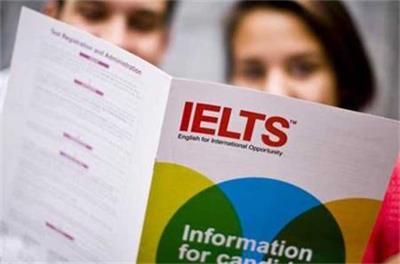留学生必看!36组雅思写作高分替换词
大家好,我是留学生网站的小编,今天给大家带来一篇超实用的文章——“留学生必看!36组雅思写作高分替换词”。如果你正在准备雅思考试,或者已经参加了多次考试但总感觉分数提不上去,那么这篇文章绝对值得你一看!
引言:为什么我们需要高分替换词?
雅思写作部分,尤其是Task 2,对词汇量的要求非常高。很多同学在备考过程中会发现,尽管自己已经背了很多单词,但在实际写作中还是会反复使用一些简单的词汇,导致评分不高。今天,我们就来聊一聊如何通过使用高分替换词,让你的作文瞬间提升档次。
1. 基本词汇的高级替换
首先,我们来看看一些基本词汇的高级替换。比如,你是不是经常用到“good”这个词?其实,你可以试试用“excellent”(优秀的)、“outstanding”(杰出的)或者“remarkable”(显著的)来替换它。举个例子,如果你要描述一个学生的成绩非常好,可以说:“His academic performance is outstanding.” 这样听起来是不是更高级呢?
2. 描述问题的词汇
在雅思写作中,描述问题时常用的词汇有“problem”、“issue”和“challenge”。但是,如果你想让你的文章更有深度,可以尝试用“dilemma”(困境)、“conundrum”(难题)或者“predicament”(困境)。比如,你可以这样写:“The rapid urbanization has created a dilemma for city planners, as they struggle to balance economic growth with environmental sustainability.”
3. 表达观点的词汇
表达个人观点时,除了常用的“I think”和“In my opinion”,还可以用“From my perspective”(从我的角度来看)、“In my view”(在我看来)或者“According to my understanding”(据我理解)。例如:“From my perspective, the benefits of globalization far outweigh its drawbacks.” 这样的表达不仅更加地道,还能让你的文章显得更有逻辑性。
4. 描述影响的词汇
在描述某项政策或行动的影响时,除了常用的“affect”和“impact”,还可以用“influence”(影响)、“effect”(效果)或者“consequence”(后果)。例如:“The introduction of renewable energy sources has had a significant influence on reducing carbon emissions.” 这样的表达不仅更加准确,还能让你的文章更具说服力。
5. 描述原因的词汇
在解释原因时,除了常用的“because”和“due to”,还可以用“owing to”(由于)、“attributable to”(归因于)或者“as a result of”(由于)。例如:“The decline in physical activity among young people can be attributable to the widespread use of digital devices.” 这样的表达不仅更加正式,还能让你的文章显得更有学术性。
6. 描述结果的词汇
在描述结果时,除了常用的“result”和“outcome”,还可以用“consequence”(后果)、“implication”(含义)或者“ramification”(影响)。例如:“One of the major ramifications of climate change is the increased frequency of extreme weather events.” 这样的表达不仅更加丰富,还能让你的文章更具深度。
7. 描述变化的词汇
在描述变化时,除了常用的“change”和“shift”,还可以用“evolution”(演变)、“transformation”(转变)或者“transition”(过渡)。例如:“The transformation of the global economy from industrial to service-based has brought about numerous challenges and opportunities.” 这样的表达不仅更加精准,还能让你的文章显得更有层次感。
8. 描述趋势的词汇
在描述趋势时,除了常用的“trend”和“pattern”,还可以用“trajectory”(轨迹)、“tendency”(倾向)或者“direction”(方向)。例如:“The trajectory of technological advancements suggests that artificial intelligence will play an increasingly important role in our daily lives.” 这样的表达不仅更加专业,还能让你的文章更具前瞻性。
9. 描述重要性的词汇
在描述重要性时,除了常用的“important”和“significant”,还可以用“crucial”(至关重要的)、“vital”(至关重要的)或者“essential”(必不可少的)。例如:“Access to quality education is vital for the long-term development of any society.” 这样的表达不仅更加有力,还能让你的文章更具说服力。
10. 描述程度的词汇
在描述程度时,除了常用的“very”和“extremely”,还可以用“highly”(高度地)、“substantially”(显著地)或者“considerably”(相当大地)。例如:“The implementation of green technologies has substantially reduced the carbon footprint of many industries.” 这样的表达不仅更加精确,还能让你的文章更具权威性。
11. 描述频率的词汇
在描述频率时,除了常用的“often”和“frequently”,还可以用“regularly”(定期地)、“constantly”(不断地)或者“continuously”(持续地)。例如:“Social media platforms are constantly evolving to meet the changing needs of their users.” 这样的表达不仅更加生动,还能让你的文章更具动态感。
12. 描述对比的词汇
在描述对比时,除了常用的“compare”和“contrast”,还可以用“differ”(不同)、“vary”(不同)或者“disparage”(贬低)。例如:“The cultural practices of different countries vary significantly, reflecting the unique histories and values of each society.” 这样的表达不仅更加全面,还能让你的文章更具深度。
13. 描述相似性的词汇
在描述相似性时,除了常用的“similar”和“alike”,还可以用“analogous”(类似的)、“parallel”(平行的)或者“comparable”(可比较的)。例如:“The challenges faced by developing countries in the 21st century are analogous to those experienced by developed nations in the past.” 这样的表达不仅更加严谨,还能让你的文章更具逻辑性。
14. 描述时间的词汇
在描述时间时,除了常用的“time”和“period”,还可以用“duration”(持续时间)、“interval”(间隔)或者“span”(跨度)。例如:“The duration of the project was extended due to unforeseen circumstances.” 这样的表达不仅更加具体,还能让你的文章更具准确性。
15. 描述地点的词汇
在描述地点时,除了常用的“place”和“location”,还可以用“venue”(场所)、“site”(地点)或者“locale”(地点)。例如:“The conference will be held at a prestigious venue in the heart of the city.” 这样的表达不仅更加正式,还能让你的文章更具专业性。
16. 描述人的词汇
在描述人时,除了常用的“person”和“individual”,还可以用“figure”(人物)、“character”(人物)或者“entity”(实体)。例如:“She is a prominent figure in the field of environmental science.” 这样的表达不仅更加形象,还能让你的文章更具生动性。
17. 描述事物的词汇
在描述事物时,除了常用的“thing”和“item”,还可以用“object”(物体)、“artifact”(人工制品)或者“entity”(实体)。例如:“The museum houses a vast collection of ancient artifacts from various civilizations.” 这样的表达不仅更加具体,还能让你的文章更具文化感。
18. 描述情感的词汇
在描述情感时,除了常用的“happy”和“sad”,还可以用“joyful”(快乐的)、“elated”(欣喜的)或者“gloomy”(阴郁的)。例如:“The news of her acceptance into her dream university filled her with elation.” 这样的表达不仅更加细腻,还能让你的文章更具感染力。
19. 描述态度的词汇
在描述态度时,除了常用的“attitude”和“stance”,还可以用“perspective”(视角)、“viewpoint”(观点)或者“opinion”(意见)。例如:“His perspective on the issue of climate change is informed by his extensive research in environmental science.” 这样的表达不仅更加深入,还能让你的文章更具学术性。
20. 描述行为的词汇
在描述行为时,除了常用的“action”和“behavior”,还可以用“conduct”(行为)、“practice”(实践)或者“procedure”(程序)。例如:“The company’s conduct in dealing with customer complaints has been praised for its efficiency and professionalism.” 这样的表达不仅更加规范,还能让你的文章更具可信度。
21. 描述目的的词汇
在描述目的时,除了常用的“goal”和“objective”,还可以用“aim”(目标)、“intention”(意图)或者“purpose”(目的)。例如:“The primary aim of the new policy is to reduce traffic congestion in the city center.” 这样的表达不仅更加明确,还能让你的文章更具针对性。
22. 描述方法的词汇
在描述方法时,除了常用的“method”和“way”,还可以用“approach”(方法)、“strategy”(策略)或者“technique”(技术)。例如:“A multi-faceted approach is needed to address the complex issues surrounding urban planning.” 这样的表达不仅更加系统,还能让你的文章更具条理性。
23. 描述结果的词汇
在描述结果时,除了常用的“result”和“outcome”,还可以用“consequence”(后果)、“effect”(效果)或者“impact”(影响)。例如:“The consequences of deforestation on biodiversity are severe and long-lasting.” 这样的表达不仅更加深刻,还能让你的文章更具警示性。
24. 描述过程的词汇
在描述过程时,除了常用的“process”和“procedure”,还可以用“sequence”(序列)、“series”(系列)或者“chain”(链)。例如:“The sequence of events leading up to the discovery of penicillin is a fascinating tale of scientific innovation.” 这样的表达不仅更加连贯,还能让你的文章更具故事性。
25. 描述原因的词汇
在描述原因时,除了常用的“reason”和“cause”,还可以用“factor”(因素)、“element”(要素)或者“component”(组成部分)。例如:“Several factors contribute to the rising cost of healthcare, including technological advancements and an aging population.” 这样的表达不仅更加全面,还能让你的文章更具分析性。
26. 描述影响的词汇
在描述影响时,除了常用的“influence”和“impact”,还可以用“effect”(效果)、“consequence”(后果)或者“ramification”(影响)。例如:“The ramifications of the new tax policy on small businesses are yet to be fully understood.” 这样的表达不仅更加深远,还能让你的文章更具前瞻性。
27. 描述重要性的词汇
在描述重要性时,除了常用的“importance”和“significance”,还可以用“cruciality”(重要性)、“criticality”(关键性)或者“necessity”(必要性)。例如:“The necessity of addressing climate change cannot be overstated, as it poses a threat to the survival of many species.” 这样的表达不仅更加强烈,还能让你的文章更具紧迫感。
28. 描述程度的词汇
在描述程度时,除了常用的“degree”和“extent”,还可以用“magnitude”(规模)、“intensity”(强度)或者“severity”(严重性)。例如:“The severity of the drought has led to water rationing in several regions.” 这样的表达不仅更加具体,还能让你的文章更具现实感。
29. 描述频率的词汇
在描述频率时,除了常用的“frequency”和“rate”,还可以用“occurrence”(发生率)、“recurrence”(重复出现)或者“prevalence”(普遍性)。例如:“The prevalence of mental health issues among teenagers is a growing concern for educators and parents alike.” 这样的表达不仅更加广泛,还能让你的文章更具社会性。
30. 描述对比的词汇
在描述对比时,除了常用的“comparison”和“contrast”,还可以用“disparity”(差异)、“discrepancy”(差异)或者“divergence”(分歧)。例如:“The disparity in income levels between urban and rural areas is a major challenge for policymakers.” 这样的表达不仅更加鲜明,还能让你的文章更具批判性。
31. 描述相似性的词汇
在描述相似性时,除了常用的“similarity”和“likeness”,还可以用“analogy”(类比)、“parallelism”(平行)或者“correlation”(相关性)。例如:“The analogy between the human brain and a computer helps us understand the complexities of cognitive processes.” 这样的表达不仅更加形象,还能让你的文章更具科学性。
32. 描述时间的词汇
在描述时间时,除了常用的“time”和“duration”,还可以用“temporality”(时间性)、“chronology”(时间顺序)或者“timeline”(时间线)。例如:“The chronology of events in the novel is carefully constructed to create suspense and intrigue.” 这样的表达不仅更加有序,还能让你的文章更具文学性。
33. 描述地点的词汇
在描述地点时,除了常用的“location”和“place”,还可以用“setting”(背景)、“context”(背景)或者“environment”(环境)。例如:“The setting of the film, a remote village in the mountains, adds to its atmospheric quality.” 这样的表达不仅更加丰富,还能让你的文章更具视觉效果。
34. 描述人的词汇
在描述人时,除了常用的“person”和“individual”,还可以用“character”(人物)、“figure”(人物)或者“persona”(人格)。例如:“She is a charismatic figure in the world of politics, known for her eloquence and passion.” 这样的表达不仅更加立体,还能让你的文章更具魅力。
35. 描述事物的词汇
在描述事物时,除了常用的“thing”和“item”,还可以用“artifact”(人工制品)、“object”(物体)或者“entity”(实体)。例如:“The ancient artifact discovered in the excavation site provides valuable insights into the culture of the time.” 这样的表达不仅更加具体,还能让你的文章更具历史感。
36. 描述情感的词汇
在描述情感时,除了常用的“emotion”和“feeling”,还可以用“sentiment”(情感)、“affect”(情感)或者“mood”(情绪)。例如:“The sentiment of the audience shifted from skepticism to enthusiasm as the speaker presented compelling evidence.” 这样的表达不仅更加细腻,还能让你的文章更具情感共鸣。
结语:提升你的雅思写作水平
希望今天的分享能帮助你在雅思写作中脱颖而出。记住,词汇的丰富性和多样性是提高写作水平的关键。多读、多写、多积累,相信你一定能写出更加精彩的文章!如果你有任何疑问或需要更多帮助,欢迎随时留言交流。祝你备考顺利,早日取得理想的成绩!





